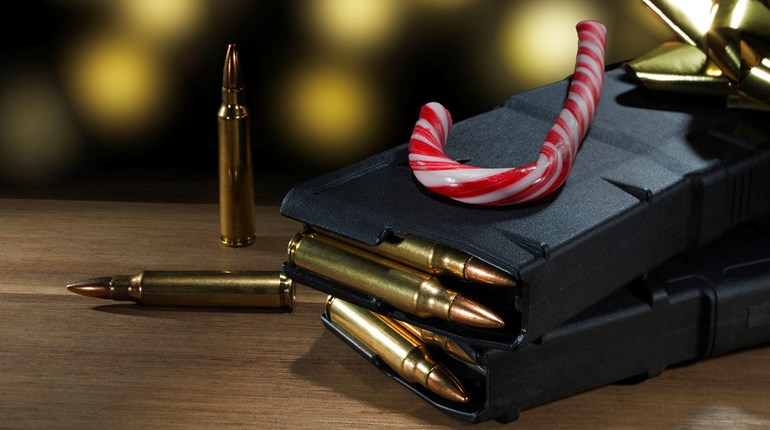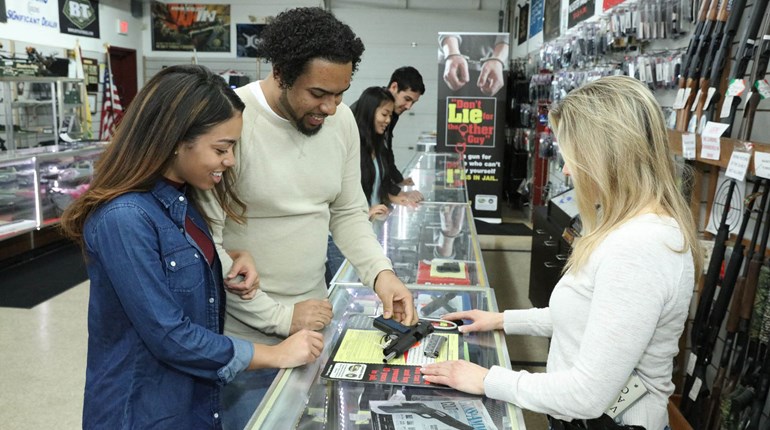
If you purchased a new rifle prior to 1963, it very likely was made of wood and steel—the materials rifles had been made of for centuries. But following that year, the shooting world was turned upside down by a new rifle made with an aluminum-alloy receiver and synthetic stock. Today known as the AR-15, or Modern Sporting Rifle (MSR), the shooting sports have never been the same.
1. The beginnings of the AR-15 date back even further than 1963. Four years earlier, the ArmaLite Corporation introduced the first such prototype rifle for the U. S. military. But due to financial problems, ArmaLite sold the rifle’s design to Colt.
2. After Colt tinkered with the concept, the rifle was adopted by the U.S. military and the M16 was born. Lightweight and capable of firing in semi-automatic, three-shot burst, or fully-automatic modes, the rifle quickly proved itself in the jungles of Viet Nam and other battlefields.
3. The rifle was so successful and popular with GIs that a civilian, strictly semi-automatic version was soon produced, known as the Colt AR-15. Although “AR-15” remains a Colt registered trademark, the rifle today is produced by dozens of different firearms manufacturers around the world.
4. Initially chambered for relatively small, high-velocity rounds—such as .223 caliber or 5.56mm—AR-15s today are easily adapted for firing numerous other rounds, as well. And for clarification, the “AR” part of the gun’s name stands for ArmaLite Rifle, not Assault Rifle or Automatic Rifle as some mistakenly believe. The “15” designation is simply the original model number of the gun. Again, all legal civilian versions of the AR-15 are semi-automatic.
5. The rifle has become popular with civilian shooters for several reasons: it’s lightweight, has low recoil (making it comfortable for most women and kids to shoot), and is accurate even with open sights. It’s also easy to clean and maintain. In addition, the gun’s modular design and rail system allow for easy mounting of a dizzying array of after-market accessories: sights, grips, lighting systems, night-vision devices, laser sights, muzzle brakes/flash suppressors, sound suppressors, bipods, etc.
6. A trend in recent years at the National Rifle and Pistol Matches (held annually at Camp Perry in Ohio) is the number of shooters firing AR-15 rifles. As a result, the number of women shooters participating in the various competitions has increased. “AR-15s are lighter, have less recoil, and are very easy guns to shoot accurately,” said Sue Mogle, a competitive shooter, mom of a youth shooter, and a registered nurse from Indiana. “You don’t have to be a big, strong, fast athlete to shoot well,” she said. “Shooting is really more mental discipline than physical, and a woman shooter can be equally as competitive as the guys by shooting an AR.” About 10 percent of the shooters at the National Rifle and Pistol Matches are female and that number is increasing, mainly because teen girls and young women are getting started earlier in the shooting sports—thanks to the AR-15.
7. Like a 1911 handgun (so named because it was first introduced in the year 1911), the AR-15 is today a general style of rifle, not a specific model made by a specific manufacturer. That said, will the AR-15 stand the test of time as the 1911 has? Very likely, as its popularity shows no signs of waning, with both younger and older shooters alike. And if AR-15s were not already popular enough, recent attempts at implementing additional gun-control measures resulted in even more of the rifles rapidly moving off gun-store shelves.
Bonus: What is a Modern Sporting Rifle (MSR)?
Originally all black in color and looking very different from traditional rifles of the time, AR-15s faced some serious resistance when first introduced to the civilian shooting public. To many, their appearance was just too much like the fully automatic military assault rifles they were patterned after. In many people’s opinion, the guns just looked intimidating.
To counter that sentiment, the National Shooting Sports Foundation coined the term Modern Sporting Rifle, pointing out that these new semi-autos were no different in function than previous semi-automatic rifles. It took a while for the AR-15 concept to catch on and become fully accepted by sportsmen—especially with older hunters and shooters—but the floodgates gradually swung open and today AR-15s are the most popular sporting rifle platform. So if you own an AR-15 you also own a Modern Sporting Rifle (MSR), and vice versa.







































